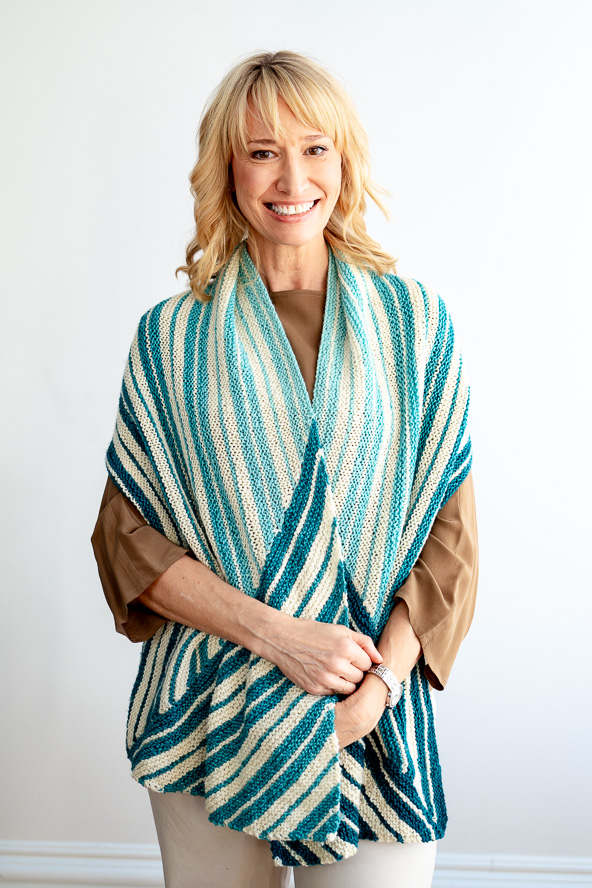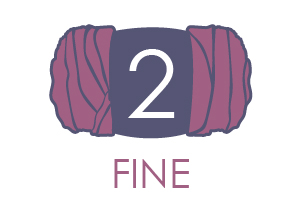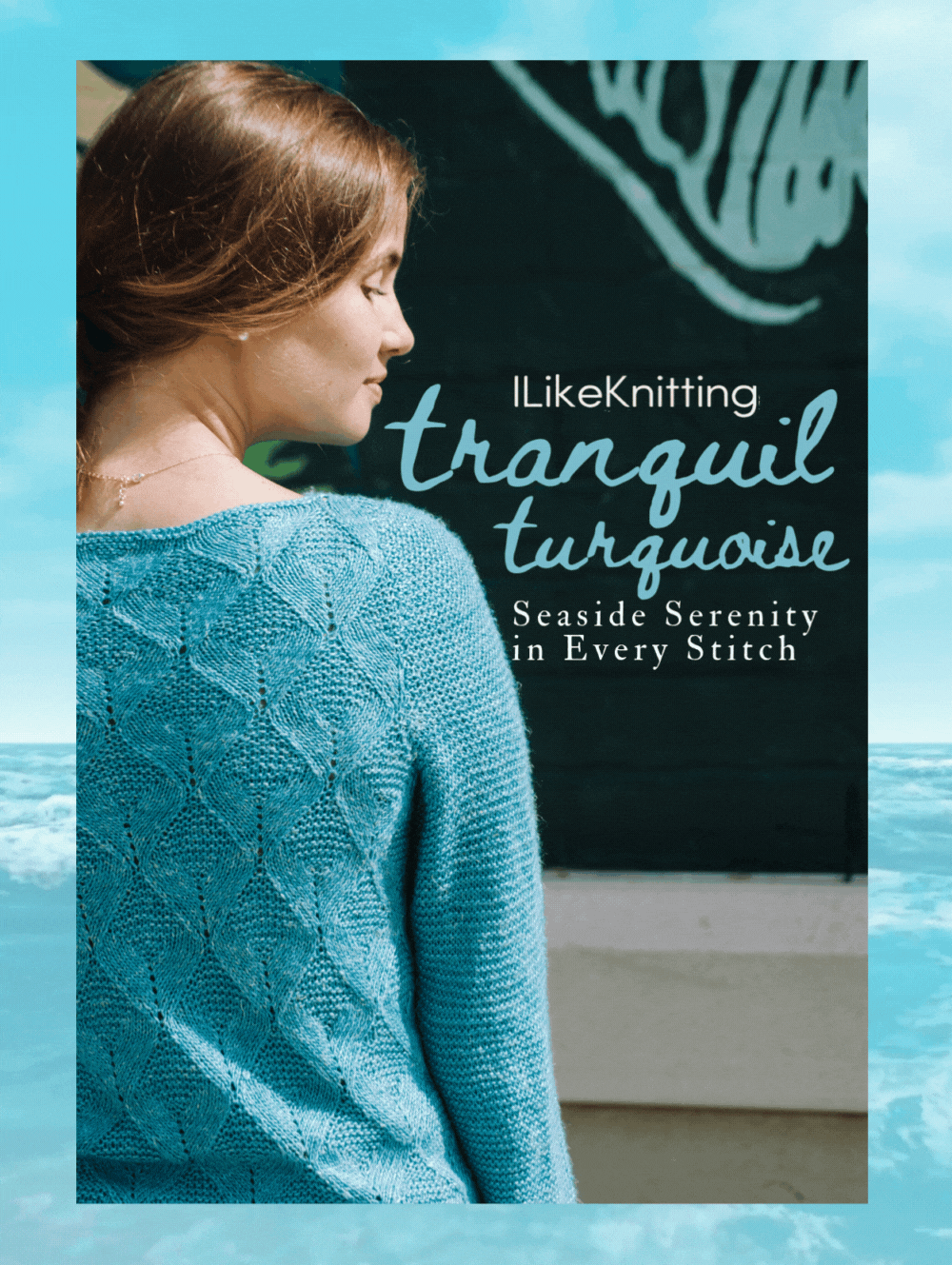
This pattern is a spirited rectangular shawl that embodies the coastal allure through captivating garter stripes, playing with opposing angles and sizes to enchant the eye. At its heart, a stunning long color-change gradient takes center stage, artfully framed by a neutral contrast that adds depth and sophistication. Crafted modularly, this wrap begins with the center panel, radiating outward with stitches picked up for each corner section. These corners are knit at diagonal angles, infusing extra visual intrigue into the main section, evoking the ever-shifting beauty of the coastline.
Time: 2-week project
Skill Level: Easy
Size: 60 x 18″
Gauge: 18 sts and 35 rows = 4” [10 cm] in garter st
Materials
 Yarn: Wonderland Yarns Mad Hatter Sport Weight (100% superwash merino; 344 yards / 4 oz) Blossoms Color 24 Jade Mar-Flower (MC, 2 cakes), Color 00 White Rabbit (CC, 2 skeins)
Yarn: Wonderland Yarns Mad Hatter Sport Weight (100% superwash merino; 344 yards / 4 oz) Blossoms Color 24 Jade Mar-Flower (MC, 2 cakes), Color 00 White Rabbit (CC, 2 skeins)
Needles: US size 7 (4.5 mm) 32″ circular needles for knitting flat
Notions: Tapestry needle
Abbreviations
CDD – central double decrease – slip 2 as if to k2tog, k 1, pass first 2 sts over third
Pattern Notes
All rows are knit, with decreases worked on first and last two stitches of each right-side row. The striping order is as follows:
6 Rows MC
2 Rows CC
6 Rows MC
6 Rows CC
2 Rows MC
6 Rows CC
Carry your unused yarn up the side, catching any time you will not be knitting with it for more than two rows by bringing the working yarn under the unused yarn before beginning a RS row.
One cake of the Blossom gradient yarn will knit the center section almost exactly. If you need more, begin working from second cake using the same hue (light or dark) that ended the first Blossom.
Pattern
Center Section
With MC, CO 265 sts using the backwards loop cast on.
Row 1 (RS): With MC, knit.
Row 2 (WS): With MC, knit.
Row 3: With MC, ssk, k to last 2 sts, k2tog. (2 sts dec’d, 263 sts)
Row 4: With MC, knit.
Rows 3-4 establish the stitch pattern which is repeated throughout following striping pattern described above. Each time Row 3 is worked there is a decrease of 2 sts.
Row 5-6: With MC, Rep rows 3-4. (261 sts)
Row 7-8: With CC, Rep rows 3-4. (259 sts)
Row 9-14: With MC, Rep rows 3-4. (253 sts)
Row 15-20: With CC, Rep rows 3-4. (247 sts)
Row 21-22: With MC, Rep rows 3-4. (245 sts)
Row 23-28: With CC, Rep rows 3-4. (239 sts)
Work Rows 1-28 four more times, then work Rows 1-14 once more, replacing Row 1 as follows each time:
Row 1: With MC, ssk, k to last 2 sts, k2tog.
After all rows are worked, stitch count is 139 sts.
BO loosely with MC. Break yarns, leaving 6″ tails.
Corner Sections (work two)
Row 1 (RS): With RS facing and using MC, p/u and k 101 sts along diagonal edge.
Row 2 (WS): With MC, knit.
Row 3: With MC, ssk, k to last 2 sts, k2tog. (2 sts dec’d, 99 sts)
Row 4: With MC, knit.
Row 5-6: With MC, Rep rows 3-4. (97 sts)
Row 7-8: With CC, Rep rows 3-4. (95 sts)
Row 9-14: With MC, Rep rows 3-4. (89 sts)
Row 15-20: With CC, Rep rows 3-4. (83 sts)
Row 21-22: With MC, Rep rows 3-4. (81 sts)
Row 23-28: With CC, Rep rows 3-4. (75 sts)
Work Rows 1-28 two more times, then work Rows 1-14 once more, replacing Row 1 as follows each time:
Row 1: With MC, ssk, k to last 2 sts, k2tog.
After all rows are worked, stitch count is 5 sts.
Break MC, leaving a 6″ tail.
Then work the final two rows as follows:
Row 1 (RS): With CC, ssk, k to last 2 sts, k2tog. (2 sts dec’d, 3 sts)
Row 2 (WS): With CC, knit.
Row 3: With CC, cdd. (2 sts dec’d, 1 st)
Break CC, leaving a 6″ tail. Pull tail through rem st.
Finishing
Weave in ends. Block to measurements.
Knit the colors of the sea. Tranquil Turquoise is a serene collection of ocean-inspired patterns that channel the calm of coastal living through breezy silhouettes, lightweight textures, and soothing hues. Let each stitch carry you seaside as you create effortless, warm-weather knits that reflect the beauty of the shore.



I think it’s something about how the shawl was draped in the photograph, or perhaps how it had been folded for a bit prior to that. It’s nothing a bit of a steam blocking wouldn’t fix. I have the original in hand now and the diagonal sections are smooth and drape/look the same as the straight sections. Happy knitting!
I love this and that you engineered it so interestingly … but something about the diagonal looks a bit wonky clumsy … like the gauge is larger or the yarn is thicker in the darker area? is it the camera? I am nowhere near a polished knitter like you so I am concerned mine will be waaaay wonky!